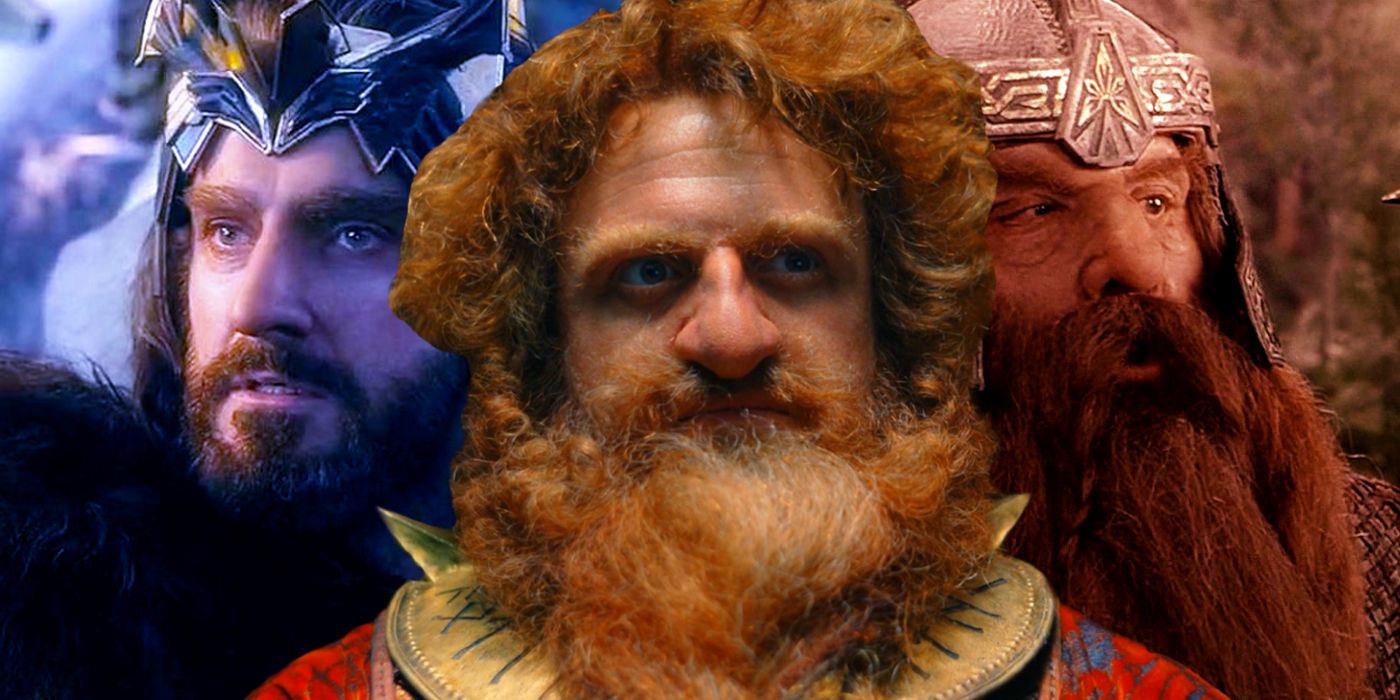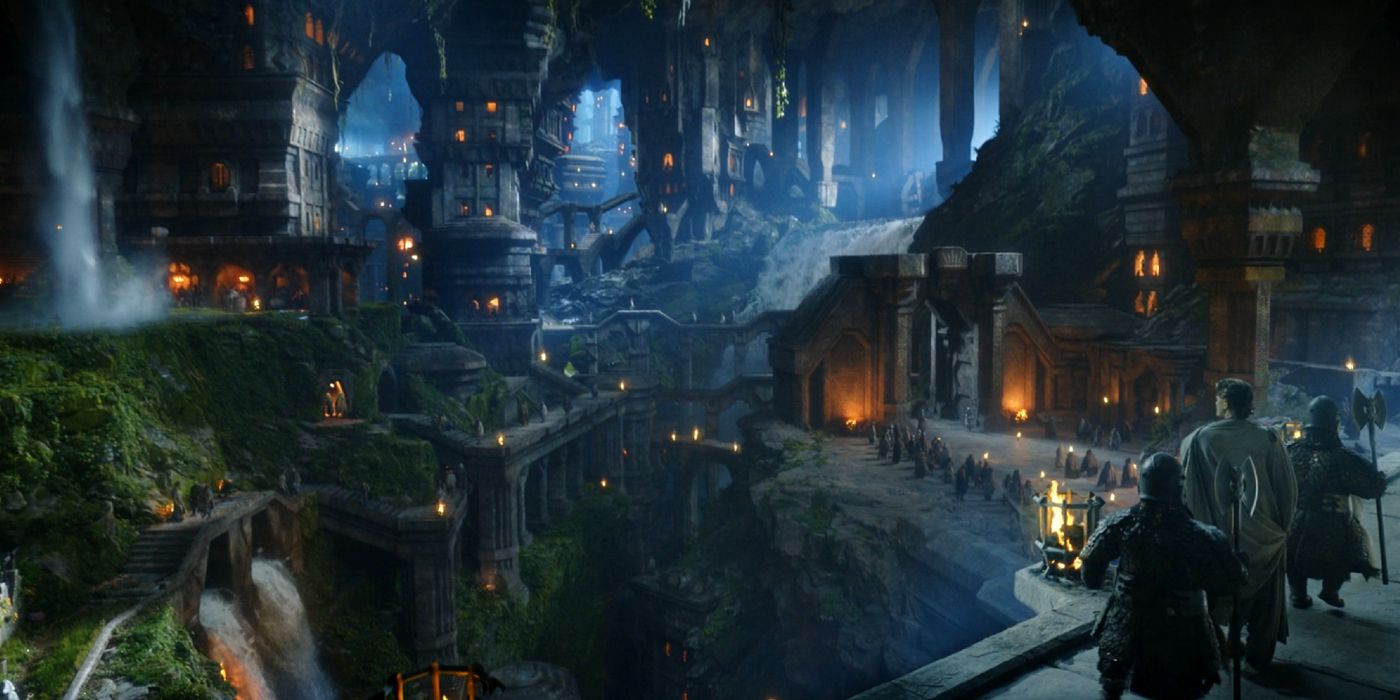Warning: Spoilers for The Lord of the Rings: The Rings of Power episode 2.Dwarves weren’t shown at their best in Peter Jackson's The Lord of the Rings and The Hobbit trilogies, but The Lord of the Rings: The Rings of Power finally changes that. Amazon's The Lord of the Rings: The Rings of Power takes place thousands of years before The Hobbit, so the show's portrayal of Middle-earth is different in several major ways compared to the Middle-earth seen in Peter Jackson's numerous film adaptations. One of the biggest differences is how Dwarves are portrayed, and the difference is so stark, it even stands out compared to other media portrayals of Dwarves in fantasy settings.
Whether it's Peter Jackson’s film adaptations or a video game like Skyrim, Dwarves are consistently treated like the fantasy genre's version of Atlantis: a long-lost, technologically advanced civilization. The Lord of the Rings and The Hobbit trilogies went even further by making Dwarves a frequent source of comic relief. It became enough of a problem that The Lord of the Rings: The Rings of Power’s showrunners promised to make Dwarves “cool” again and address a Gimli complaint.
The second episode of The Lord of the Rings: The Rings of Power doesn't completely strip Dwarves of comedy - Elrond's visit to Khazad-dûm produces a much-needed injection of some lightheartedness - but it does show Dwarves in their glorious heyday. The episode reveals the breathtaking scope of what a thriving Dwarven civilization looks like from perspectives people may be familiar with like feats of architecture and engineering. However, the episode also provides some fresh insights into Dwarven culture.
What Rings Of Power Is Already Revealing About The Dwarves
The Lord of the Rings: The Rings of Power takes place during the Second Age when Dwarves were thriving. When Elrond and Celebrimbor journey to the legendary Dwarven kingdom of Khazad-dûm, Celebrimbor notes, "[The Dwarves] sculpt the rock with the respect of one who cares for an aged parent." Finally, someone can speak reverentially about Dwarves in the present-tense. Once Elrond gains entry after invoking the Rite of Sigin-tarâg, the half-human Elf walks through the underground kingdom with his jaw agape as he marvels at the intricate agricultural system and mechanized transportation lifts. It's an incredible reflection of what Khazad-dûm was like before Balrog's inadvertent release.
Elrond's goal is to meet with his Dwarven friend, Prince Durin IV, to discuss the Elves and Dwarves joining forces to build a powerful forge - the same forge that will eventually be used to create the titular Rings of Power. Elrond invokes the Rite of Sigin-tarâg, a Dwarven challenge between two competitors to see who can break the most rocks, to gain an audience with Durin IV. The ensuing raucous scene is one of the first examples of Dwarven culture being represented in any The Lord of the Rings live-action adaptation that goes beyond superficial discussions of what are usually just Dwarven tropes. Later on, Elrond meets Durin IV’s wife and two kids and has dinner with the Dwarven family; this also marks a franchise first for explicitly showing the familial lifestyle of Dwarves rather than it being just a topic of oft-wistful conversation before.
Dwarves will play an important role in future The Lord of the Rings: The Rings of Power episodes so more should get revealed about dwarves in their heyday. Whether it’s showing a Dwarven custom like the Rite of Sigin-tarâg, or scenes of a loving Dwarven family, it's clear The Lord of the Rings: The Rings of Power has very different plans for Dwarves than Peter Jackson's film adaptations did. At long last, the Dwarves of Middle-earth are getting their just due.


